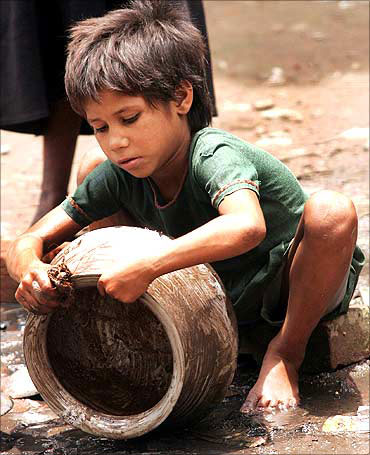
His liquid eyes, twin pools of innocence, have a sparkle that only children are blessed with. He speaks in a staccato burst, tripping over his words and lisps a current Bollywood hit with glee.
His toothy, impish grin belies the fact that while other children his age are either playing or being schooled, he is forced to serve food to people at the dhaba that he works at on the Mumbai-Nagpur highway near Jalgaon in Maharashtra. He does not seem to be a day over ten years old, but insists he is fourteen.
Raju -- he doesn't offer his surname -- goes about his chore with a cheerfulness that is almost heart-breaking. If he knows that he has been deprived of the right to childhood or of the joys of being a goofy kid or to fulfil his true potential, he disguises it well behind his infectious smile.
He has no inkling of what the future holds for him nor does he seem to care. He is just too busy trying to earn enough to buy some food so that he and his family do not go to bed hungry.
Today, though, he is happy, secure in the knowledge that he would not have to make do with water alone when he goes to bed after a gruelling 12-hour work day at the dhaba.
. . .
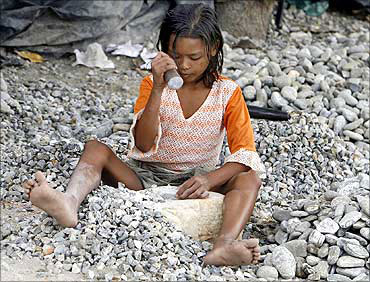
India, an IT giant and the world's second-fastest growing major economy, has millions of Rajus: all under 14 years of age, some as young as 4 or 5, and all toiling hard just to get a square meal to keep body and soul from parting company.
Child labour is a dagger through India's soul. The country has the dubious distinction of being home to the largest child labour force in the world, with an estimated 30 per cent of the world's working kids living here.
Today millions of children work as labourers in various businesses in India. You find children being exploited in restaurants, silk industry, carpet weaving, firecracker units, et cetera.
These kids are forced to work to help their poor families, but this robs them of their right to childhood and all its associated joys. Child labour also crushes their right to normal physical and mental development, to education and thus to a healthy, prosperous life.
Seven days a week, these children toil as hard as their tender bodies can allow them to, working in inhuman conditions in cramped, dim rooms, breathing toxic fumes, and every now and then being subjected to verbal and physical violence by their employers. These young children work for hours on end, suffering from constant fatigue.
Most of these kids work for as less as Rs 300 to Rs 500 a month; sometimes for no money at all as they are given food to survive.
. . .
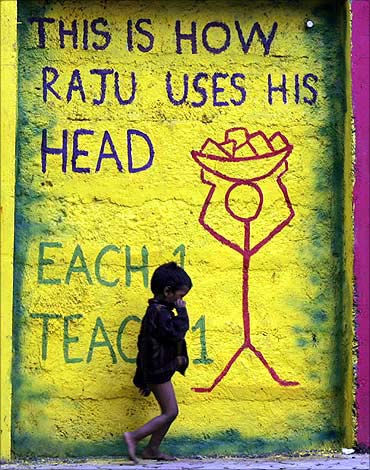
Government statistics say that there are 2 crore (20 million) child labourers in India, a country that has ambitions of becoming a global superpower in a few years. Non-governmental agencies assert that the figure is more than 6 crore (60 million) including agricultural workers; some claim that the number could be 100 million, if one were to define all children out of school as child labourers.
The International Labour Organisation estimates that 218 million children ages 5-17 are engaged in child labour the world over.
A recent report, produced by the International Confederation of Free Trade Unions, says there are as many as 60 million children working in India's agricultural, industrial and commercial sectors. The report argues that India's booming economy takes advantage of children workers to aid its growth and to bring wealth to a minority.
Even though the urban centres see many child labourers, estimates say that about 80 per cent of child labourers reside in rural India, where they are forced to work in agricultural activities such as fanning, livestock rearing, forestry and fisheries.
Reports say that there are more children under the age of 14 in India than the entire population of the United States. And children under 14 years of age account for about 4 per cent of the total labour force in the country. Of these children, nine out of every ten work in their own rural family settings.
Nearly 85 per cent are engaged in traditional agricultural activities. Less than 9 per cent work in manufacturing, services and repairs. About 0.8 per cent work in factories.
. . .

What is child labour/bonded child labour
Child labour is done by any working child who is under the age specified by law. The word 'work' means full time commercial work to sustain self or add to the family income. Any child who is employed in activities to feed himself and his family is being subjected to 'child labour'.
A child working part time (3-4 hours) to learn and earn for self and parents after school, is not considered 'child labour'.
The most inhuman form of child exploitation is the age old practice of bonded labour in India. Here children are sold to the buyer like a commodity for a certain period of time. The labour that the child is subjected to is treated as collateral security and exploiters 'buy' them for small sums at exorbitant interest rates.
. . .
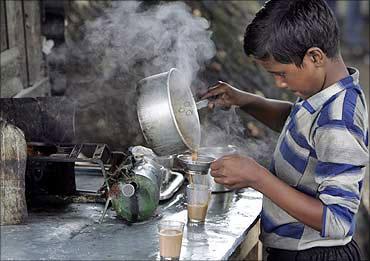
Reasons for child labour
There are many reasons for child labour. Poverty is the biggest reason for child labour in India. The small income of child labourers is also absorbed by their families.
Among the most obvious other reasons are unemployment; non-implementation of government-declared minimum wages; parental illiteracy; general acceptance of the society when it comes to child labour, ignorance, lack of education and exposure, exploitation of cheap and unorganized labour; prevalence of bonded labour; lack of land reform in most Indian states, et cetera.
Children, who are rag-pickers, beggars, street sellers, street entertainers, child prostitutes, mostly without natural guardians, are exploited by gangsters and racketeers. These kids are mostly illegal migrants.
. . .
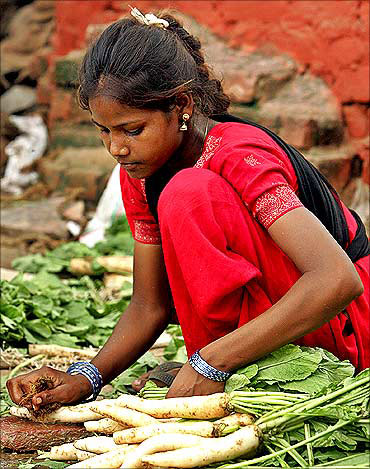
Why does child labour thrive in India?
Absence of compulsory education at the primary level, parental ignorance regarding the bad effects of child labour, the lack of implementation of child labour laws and penalties, non-availability and non-accessibility of schools, boring and unpractical school curriculum and cheap child labour are some other factors which lead to child labour.
Illiterate and ignorant parents do not understand the need for proper physical, cognitive and emotional development of their children. They are themselves uneducated, so they don't realise the importance of education for their children. Adult unemployment and urbanisation also cause child labour.
Businesses save money as child labour is cheap and kids can be easily exploited, taking advantage of their parents' poverty and helplessness. This further spurs the rise of child labour in the country. So factories find loopholes and get round the law by declaring that the child labourer is a distant family member or is above 14 years of age.
. . .

Child labour in India is mostly practiced in restaurants, roadside stalls; matches, fireworks and explosives industry; glass and bangles factories; beedi-making; carpet-making; lock-making; brassware; export-oriented garment units; gem polishing export industry; slate mines and manufacturing units; leather units; diamond industry; building and construction industry; brick kilns, helpers to mechanics, masons, carpenters, painters, plumbers, cooks, etc.
Thousands of affluent Indians hire youngsters for household chores and to look after their own kids, under the pretext of providing some money to the parents of the child labourers and of offering a better life than he/she would normally have had.
. . .
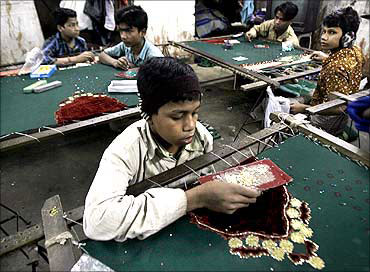
Child labourers suffer horrific abuse
Non-governmental organisations working towards eradicating child labour in India say that:
. . .
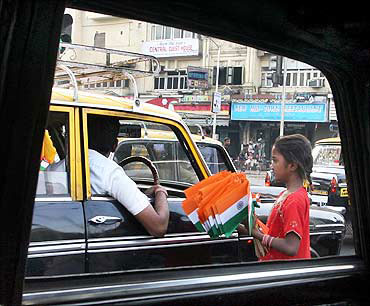
Child labour laws in India
India's policy on child labour has evolved over time. Laws relating to child labour in India are consistent with the International Labour Conference resolution of 1979.
The policy of the government is to ban employment of children below the age of 14 years in factories, mines and hazardous employment and to regulate the working conditions of children in other employment. The Child Labour (Prohibition and Regulation) Act, 1986 seeks to achieve this basic objective.
Through a notification dated May 26, 1993, the working conditions of children have been regulated in all employment not prohibited under the Child Labour (Prohibition and Regulation) Act.
Following up on a preliminary notification issued on October 5, 1993, the government has also prohibited employment of children in occupation processes like slaughter houses, printing, cashewnut descaling and processing, soldering, etc.
The Indian Constitution says that child labour is a wrong practice and standards should be set by law to eliminate it. The Child Labour Act of 1986 implemented by the government of India makes child labour illegal in many regions and sets the minimum age of employment at 14 years. No wonder the barely 10-year-old Raju at the dhaba said he was 14. Exploiters threaten kids in many ways and the child has no way out but to lie to keep his 'job'.
However, there are many loop holes in this law: it does not make child labour completely illegal and does not meet the guidelines set by the International Labour Organisation concerning the minimum age for employment, which is 15 years. Developing countries are, however, allowed to set the minimum age at 14 years in accordance with their socio- economic circumstances.
. . .
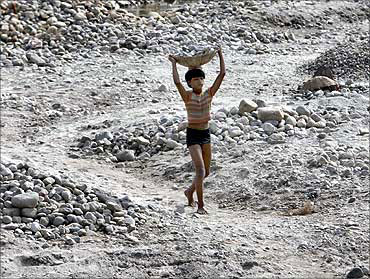
Due to economic factors, many of the law's goals are difficult to meet. The law, for example, does nothing to protect children who perform domestic or unreported labour. In almost all Indian industries girls are unrecognised labourers because they are seen as helpers and not workers. Girls are thus not protected by the law.
Penalties
The Child Labour (Prohibition And Regualtion) Act, 1986 and Rules states: Whoever employs any child or permits any child to work in contravention of the provisions of Sec. 3 can be punished with imprisonment for a term which shall not be less than three months but which may extend to one year or with fine which shall not be less than Rs 10,000 but which may extend to Rs 20,000 or with both.
Whoever, having been convicted of an offence under Sec. 3, commits a like offence later, shall be punishable with imprisonment for a term which shall not be less than six months but which may extend to two years.
. . .
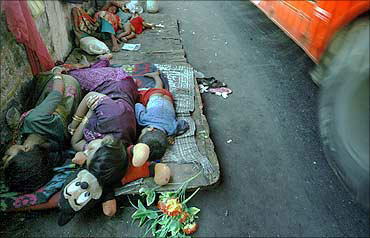
Plan to eliminate child labour
June 12 was observed as World Day against Child Labour. On Monday, June 21, a group of eminent people gave a petition to Prime Minister Manmohan Singh seeking a ban on all forms of employment of children under the age of 14 and sought urgent amendments to the child labour law.
'Save the Children', an NGO, which started a 45-day campaign against child labour, asked 45 prominent people from various walks of life to endorse a petition at the end of its campaign.
The petition sought for urgent amendments to the existing child labour law in the wake of the Right to Education Act, which provides for free and compulsory elementary education to all children of the age of 6-14 years.
By signing the petition, they all have agreed that the Child Labour Prohibition and Regulation Act should be amended as soon as possible to ban employment of children under 14, the NGO said.
The International Programme on the Elimination of Child Labour
The International Programme on the Elimination of Child Labour is a global programme launched by the International Labour Organization in December 1991.
India was the first country to join it in 1992 when it signed a memorandum of understanding with the ILO. The long-term objective of IPEC is to contribute to the effective abolition of child labour. Its immediate objectives are:
Elimination of the capability of ILO constituents and non-government organisations to design, implement and evaluate programmes for child labour elimination;
To identity interventions at community and national levels which could serve as models for replication; and
Creation of awareness and social mobilization for securing elimination of child labour.
At the international level, IPEC has a programme steering committee consisting of representatives of the ILO, the donors and participating countries. At the national level in India, there is a national steering committee of which the labour secretary is the chairman. This is tripartite in its composition with representation from NGOs as well. There is a national programme coordinator based at New Delhi who coordinates IPEC work between the Union ministry of labour, the agencies receiving assistance and ILO headquarters.
. . .

The government on its part is taking steps to stop child labour and to boost literacy as a means to eliminating this social evil.
As responsible people, we need to do our bit too to help the government achieve its goal.
How do you think can child labour be eliminated in India? What should the government do about it?
Do you think education holds the key to the eradication of child labour in India? Should punishment for those violating child labour laws be increased and made tougher?
What can we as citizens of a rising India do to end this menace so that these wonderful kids do not need to toil like Raju at the dhaba and millions like him do?
What can we do to bring a smile back to these kids' faces? Tell us on the discussion board below. . .